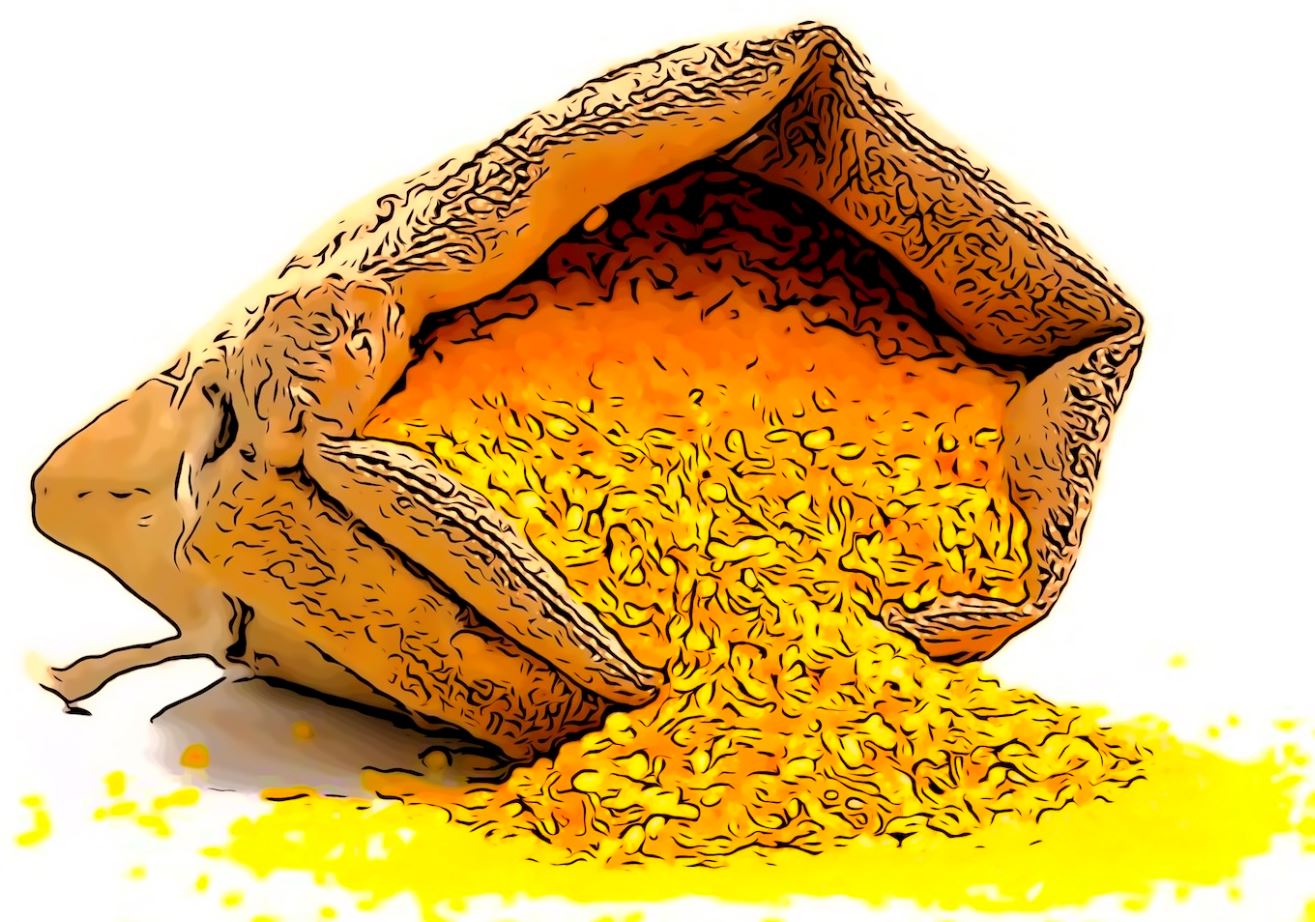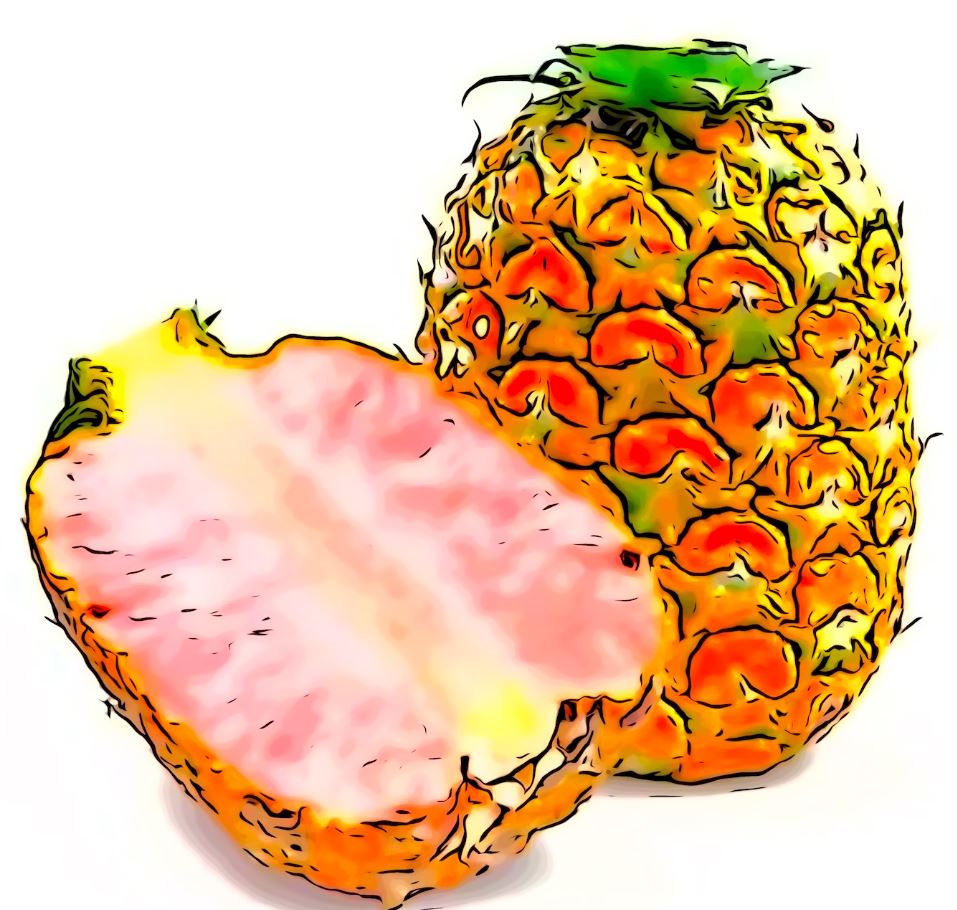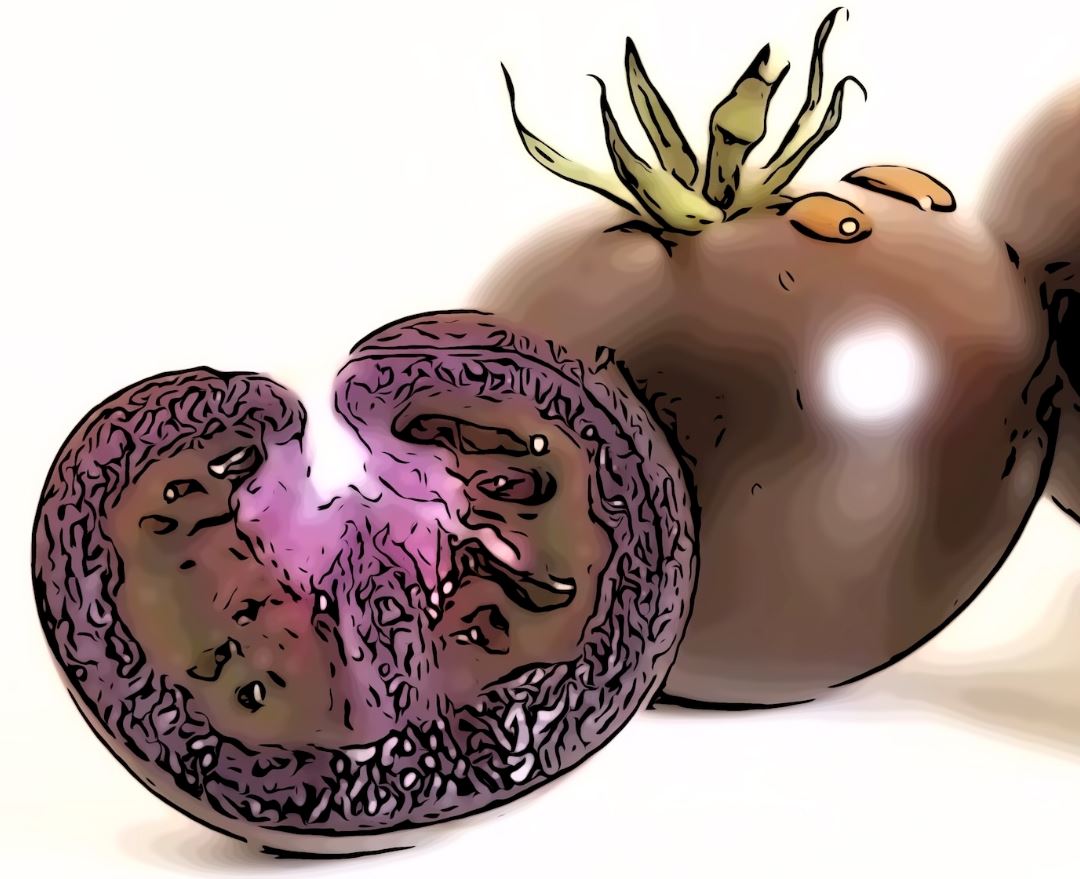Genetically Modified Foods of Distinctive Colours
and Their Features Targeting Consumers
White or brown rice, pineapple with yellow flesh and red tomato are not something new and we see them every day in the market. However, have you heard of rice in golden colour, pineapple with pink flesh and tomato in purple colour? In recent years, some crops of distinctive colours were developed by genetic modification, for specific organoleptic properties or other features targeting consumers. This article will highlight some interesting examples.
Golden Rice
Golden Rice contains beta-carotene in its grain, giving the grain a yellow-orange or golden colour (see Figure 1). Beta-carotene is an orange plant pigment which the human body converts into vitamin A as needed. Golden Rice was developed to address the problem of vitamin A deficiency (VAD) in developing countries including Bangladesh, Indonesia and the Philippines where people are at a high risk of VAD and rice is a staple food. Golden Rice is intended to be used in combination with other existing approaches to overcome VAD, e.g. eating foods that are naturally high in vitamin A or beta-carotene, and taking vitamin A supplements, etc.
Figure 1: Golden Rice is genetically modified to produce beta-carotene in the grain which therefore has a yellow-orange or golden colour.
| Vitamin A is an essential nutrient needed for our visual system, growth, development as well as maintaining a healthy immune system. It is especially important for pregnant women and young children. Lack of vitamin A in the diet can lead to VAD which can damage the immune system and decrease our body’s ability to resist infections. VAD can also impact our vision and result in night blindness or even permanent total blindness if left untreated. |
While ordinary rice produces beta-carotene in photosynthetic green tissues, it is not found in the milled grain. To produce beta-carotene in the rice grain, genes encoding two enzymes, i.e. phytoene synthase from maize and carotene desaturase from a bacterium, are introduced by genetic modification. These enzymes are components of the carotenoid biosynthetic pathway. This helps complete the pathway to convert the precursor for carotenoid biosynthesis originally present in the rice grain to beta-carotene.
For countries like Bangladesh and the Philippines where rice is a staple of nearly every meal, beta carotene-enriched Golden Rice is claimed to supply up to 30-50% of the estimated average vitamin A requirement.
The safety of Golden Rice for food use has been assessed by the Food Standards Australia New Zealand, Health Canada, the U.S. Food and Drug Administration (FDA) and the Department of Agriculture-Bureau of Plant Industry of the Philippines in the past few years. It was generally concluded that Golden Rice is considered to be as safe for human consumption as food derived from conventional rice cultivars. There are no differences in the nutritional value of Golden Rice compared to other traditional rice varieties available for human consumption except for increased levels of beta-carotene.
Pink pineapple
This variety of pineapple with a distinctive flesh colour in pink is developed by genetic modification which leads to the accumulation of lycopene in the fruit (see Figure 2). Lycopene is a naturally occurring carotenoid pigment responsible for the red to pink colours in fruits such as tomatoes, watermelon and pink grapefruit. The genetic modification involves the expression of a gene from tangerine which encodes for an enzyme involved in lycopene biosynthesis. It also involves the suppression of endogenous expression of two genes which convert lycopene to other carotenoids, otherwise turning the fruit yellow. Apart from the distinctive fruit colour, the pink pineapple is claimed to be less sour, juicier and sweeter than conventional pineapples, also with a unique taste.
Figure 2: Pineapple with pink flesh developed by genetic modification which leads to the accumulation of the naturally occurring red pigment lycopene in the fruit.
The safety of the pink pineapple for food use has been assessed by the U.S. FDA and Health Canada in recent years. It was generally concluded that the food use of pink pineapple does not raise concerns related to food safety and this variety is as safe and nutritious as food derived from current commercial pineapple varieties.
Purple tomato
The distinctive deep purple colour of the purple tomato is due to enhanced levels of anthocyanins produced in the fruit (see Figure 3). Anthocyanins are red, purple and blue pigments that colour many fruits, flowers and some vegetables, such as berries, grapes, purple corn and red cabbage. The dietary intake is claimed to be associated with a reduced risk of cardiovascular disease, obesity and certain cancers.
Figure 3: The purple tomato has its fruit in deep purple colour due to enhanced levels of anthocyanins produced in the fruit by genetic modification.
Although domesticated tomatoes have genes to produce anthocyanins, they are not “turned on” in most fruits. To allow the tomato to produce anthocyanins in its fruit, two genes derived from the common garden snapdragon, encoding the transcription factors which induce anthocyanin biosynthesis in the fruit, are introduced by genetic modification. This leads to increased production of two major anthocyanins in the tomato fruit and hence the deep purple colour of the fruit. The purple tomato is intended for being consumed fresh, in salads, as well as a processed food, such as tomato juice, paste, puree, ketchup and sauce.
The safety of the purple tomato for food use was assessed by the U.S. FDA earlier this year. The U.S. FDA has no further question at this time about the safety and nutrition of human food from the purple tomato, which is comparable to and as safe as human food from other tomato varieties on the market.


